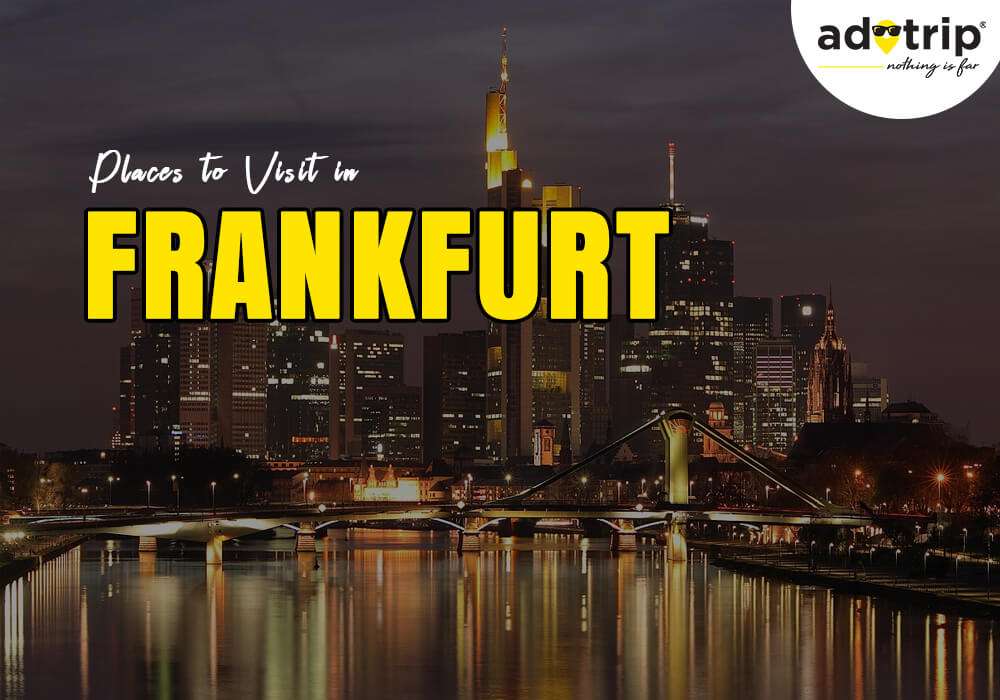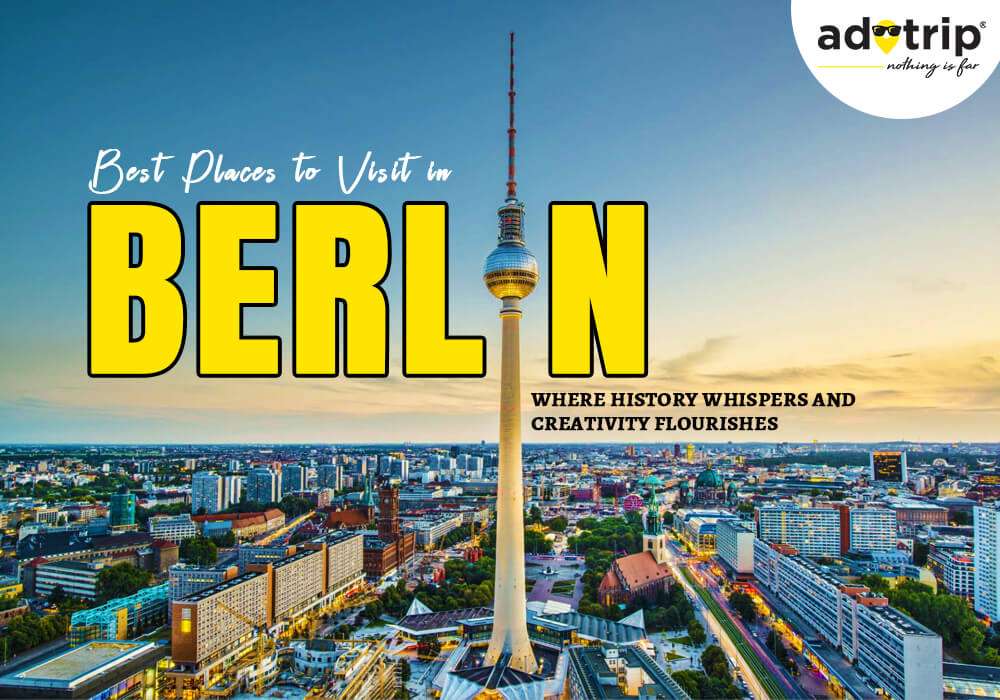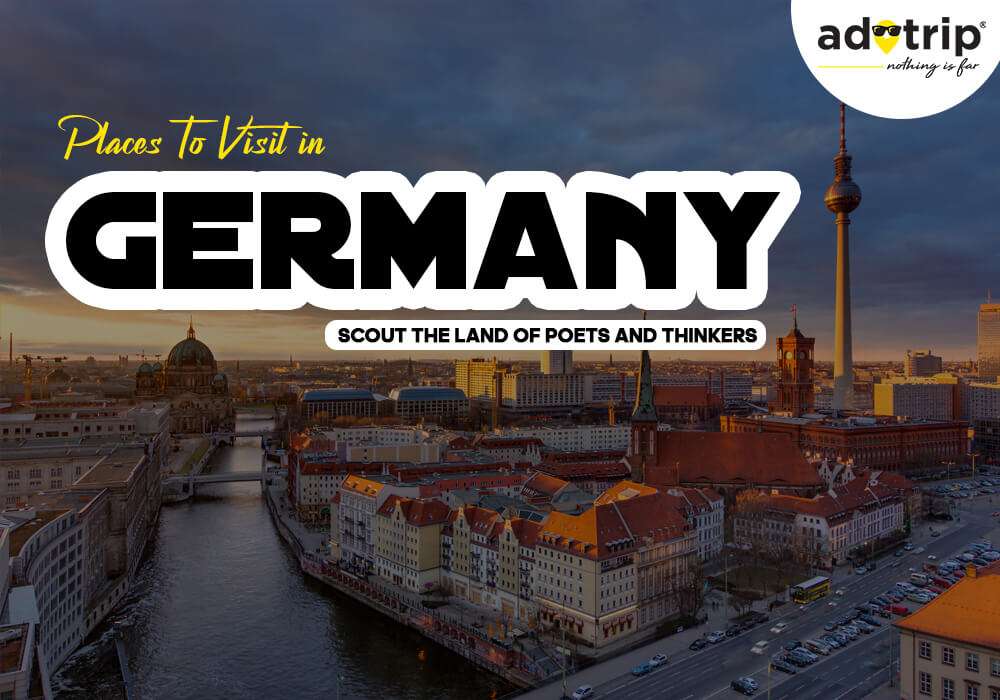
Last Updated At: 12-Dec-2023
15 Facts About Germany You Probably Didn't Know
A powerful nation in Europe renowned for its long history and cultural diversity, Germany offers an enthralling fusion of innovation, legacy, and natural beauty. Germany is home to 83 million people, and its vibrant cities like Berlin, Munich, and Hamburg display a blend of heritage and innovation. Germany's technological, engineering, and automotive capabilities demonstrate its economic influence. Germany, known for its famous landmarks, German cuisine, welcoming people, and festivities like Oktoberfest, is a popular tourist destination.
List Of 15 Interesting Facts About Germany | You Need to Know
Germany is a diverse, engaging, and surprising country, even for those who have lived there for a long time. There is much to learn about, including sports, history, language, music, food, German cultural heritage, and technology. What are some intriguing facts about Germany, then? Let's learn some interesting facts to understand the nation better.
1. There are 1,000 different sausages in Germany
With almost 1,000 different types of sausage, Germany has an astonishing selection. These sausages serve as a display of the nation's diverse regional cuisines and rich culinary history. Each kind reflects distinctive flavours and customs, from the famous bratwurst to less popular delicacies like currywurst and weisswurst. This extensive sausage menu reflects Germany's love of culinary innovation.
2. Müller is the most common surname in Germany
Müller bears the distinction of being the most prevalent last name in Germany. This name, derived from a miller's profession, commemorates the historical importance of milling in German culture. The predominance of the surname Müller attracts attention to the nation's agricultural and industrial background. Despite its widespread use, It continues to represent the country's cultural and ancestral diversity.
3. In Bavaria, Beer is food
In Bavaria, a country renowned for its beer culture, beer is treated as food rather than a beverage. In Bavarian culture, beer is highly valued and usually served with hearty meals. A distinctive and savoury experience is created when Bavaria's culinary character and rich beer legacy come together in beer gardens and celebrations like Oktoberfest.
4. Germany enjoys its bread
Germany is passionate about bread. The nation has a wide variety of bread, each showcasing regional flavours and baking methods. Bread is an essential ingredient in German cuisine, from crusty sourdoughs to hearty rye loaves. Its relevance extends beyond mere nutrition and includes aspects of cultural pride and culinary innovation, making it a crucial component of daily life in Germany.
5. Gummy bears were invented in Germany
Germany is where gummy bears first appeared and are now popular globally. German candy maker Hans Riegel made the well-known confection throughout the 1920s. Originally known as "Gummibärchen," they quickly gained popularity worldwide. The chewy, fruit-flavoured sweets transformed the confectionery industry, winning over generations with their irresistible flavour and recognisable bear shape. The candy business will never forget Germany's contribution to sweet creation.
6. The first Oktoberfest featured a wedding
A royal wedding celebration followed the first Oktoberfest, which was held in Munich in 1810. The event began with the union of Crown Prince Ludwig and Princess Therese of Saxony-Hildburghausen. The wedding and public revelry were combined over the five-day celebrations. This happy beginning developed over time into the renowned Oktoberfest we know today. It is also the perfect place for buying traditional crafts in Germany.
7. The world's biggest Cathedral is in Germany
The Cologne Cathedral (Kölner Dom), the largest cathedral in the world, is located in Germany. This Gothic masterpiece, which dominates Cologne's skyline, displays outstanding architectural skill. The building process started in 1248 and took centuries to complete. Due to its size and historical significance, the cathedral is a magnificent example of human creativity and represents Germany's rich cultural history.
8. In Germany, trying to escape from prison is legal
In Germany, there is a unique legal process used to attempt prison escapes. Although breaking is not a crime in and of itself, captured inmates may be subject to disciplinary measures inside the prison system. However, separate criminal charges may be brought if the escape attempt results in violence or material damage. This nuanced strategy is consistent with Germany's focus on rehabilitation.
9. Germany adores its castles
A rich history and beautiful architecture may be found in the enthralling castles of Germany's picturesque countryside. These structures, ranging from the mediaeval Burg Eltz to the fairytale-like Neuschwanstein Castle, remind the nation's colourful past. Germany's castles, which locals and visitors admire, inspire awe and transport tourists to the ancient ages. Follow Germany travel tips for a memorable vacay!
10. There are thousands of unexploded bombs in Germany
Germany continues to deal with the hundreds of unexploded bombs dispersed throughout its terrain decades after World War II. These explosives, which are left over from bombings during a war, present severe risks during construction and excavation. They are constantly neutralised by highly skilled bomb disposal specialists, demonstrating the long-lasting effects of the conflict on the nation's infrastructure and safety procedures.
11. The drinking age in Germany is 16
Beer and wine can only be drunk in Germany if consumed with a legal guardian present. Spirits and other alcoholic beverages must be consumed by those at least 18 years old. This strategy honours the cultural significance of responsible drinking while enabling young adults to become more familiar with alcohol in an atmosphere of surveillance before achieving full autonomy.
12. Germany was the first country to implement daylight saving time
Germany was the first country to use daylight saving time (DST) to save energy during World War I. Maximising daylight during productive hours was the goal of the practice. Even if DST is now a worldwide phenomenon, Germany's historical acceptance was the first step in this time-adjustment strategy, which still impacts how individuals organise their time and resources.
13. Over 400 zoos exist in Germany
With more than 400 zoos spread out across the nation, Germany is home to a thriving zoo culture. These numerous exhibits feature various animal species and provide visitors with educational opportunities. Germany's enormous zoo network demonstrates the country's dedication to wildlife conservation and public interaction, from renowned institutions like the Berlin Zoo to smaller, more specific ones.
14. Forests cover one-third of Germany
About one-third of Germany's land is covered in forests, demonstrating the country's steadfast dedication to environmental preservation. Like the Black Forest and Bavarian Forest, these lush woodlands promote biodiversity, carbon sequestration, and recreational opportunities. Germany's adoption of sustainable forestry methods demonstrates its commitment to protecting natural areas and promoting coexistence with nature.
15. German celebrations
Colourful German festivals are a reflection of their diverse cultural heritage. The biggest beer festival in the world, Oktoberfest, brings millions of people to Munich every year. During the festive Karneval season, there are riotous parades and celebrations. Cities come to life during the holidays due to Christmas markets. These celebrations and local festivals show how Germany enjoys adhering to tradition and sharing happy occasions.
Also Read: Best Tourist Places To Visit In Germany
Many fascinating and little-known facts about Germany astonished us. Don't be afraid to tell your friends about it so they can also have their thoughts blown! Furthermore, Adotrip makes arranging hotels, affordable flights, and fun-filled vacations simple. So why do you still wait? Explore top tourist attractions in Germany and get in touch with the Adotrip today.
Book Germany Tour Packages
Frequently Asked Questions About Facts About Germany
Q1. What are some interesting historical facts about Germany?
A1. Germany has a long and diverse history. Germany's reunification in 1990 was made possible by the fall of the Berlin Wall, a representation of the Cold War breakdown in 1989. Around 1440, the Gutenberg Press was created, revolutionising printing. Martin Luther led the Protestant Reformation, which transformed religious and cultural spheres. These turning points highlight Germany's ongoing impact on world history.
Q2. How is the education system structured in Germany?
A2. There are three stages of education in Germany: primary, secondary, and postsecondary. It offers a variety of paths to students' academic and professional goals by including multiple tracks, including Gymnasium for students headed for universities and vocational schools for hands-on training.
Q3. What are some famous German inventions and innovations?
A3. The vehicle (Karl Benz), the printing press (Johannes Gutenberg), aspirin (Felix Hoffmann), and the MP3 format (Karlheinz Brandenburg) are just a few of the innovative technologies that Germany is renowned for and which have all had a significant influence on modern living.
Q4. What are some popular German festivals and traditions?
A4. The festival and tradition calendar in Germany is highly active. Millions of people attended the famous beer festival known as Oktoberfest. Karneval comes with its vibrant parades and celebrations. Christmas markets entice with their decorations and handmade goods. Easter egg hunts and St. Martin's Day lantern processions are cherished customs highlighting Germany's propensity for joyous celebrations and charming traditions.
Q5. How does Germany's healthcare system work?
A5. A universal healthcare system exists in Germany. Both public and private health insurance are necessary for both citizens and residents. While private insurance provides more individualised coverage options, public insurance is financed by business and employee payments. Medical care is often easily accessible and of excellent quality.
Q6. What are some iconic landmarks and tourist attractions in Germany?
A6. The Brandenburg Gate, Neuschwanstein Castle, and the Cologne Cathedral are just a few of Germany's famous landmarks. The scenic Rhine Valley, the vibrant Christmas markets, and the historic Berlin Wall attract travellers while highlighting Germany's varied landscapes and rich history.
Q7. How is German cuisine unique and diverse?
A7. Hearty sausages, pretzels, and schnitzels are just a few regional flavours that make up German cuisine. Specialities from each region are available, like Sauerbraten from the Rhineland and Bavarian pretzels. It displays the variety of cultures and historical influences present in Germany.
Q8. What is the current demographic makeup of Germany?
A8. According to the most recent statistics, Germany is the most populated nation in the European Union and the nineteenth most populous nation in the world, which put its population at 84,432,670 as of 31 March 2023. In 2021, the estimated total fertility rate was 1.58, a considerable decline from the replacement rate of 2.1.
Q9. What are some key industries driving the German economy?
A9. Automotive manufacturing (Volkswagen, BMW), engineering and machinery (Siemens, Bosch), and chemicals and pharmaceuticals (Bayer, BASF) are some of the significant economic factors in Germany. These sectors place a strong emphasis on innovation and global competition.
Q10. How does Germany approach environmental sustainability and green initiatives?
A10. Germany is committed to preserving the environment with regulations that support waste management, adequate transportation, and renewable energy. It demonstrates its commitment to a cleaner future by supporting green technologies and funding research while leading global climate measures.
--- Published By Adotrip
Latest Blogs

Long Weekends In India 2025 - List of Holidays

Kazakhstan Travel Guide 2025: Affordable Luxury, Visa Free E...

Think Ayodhya is Just Temples? Discover Its Hidden Artistic...

Why Azerbaijan is the Best Budget Friendly Alternative to Sw...












.png)
 Dubai
Dubai Malaysia
Malaysia USA
USA





